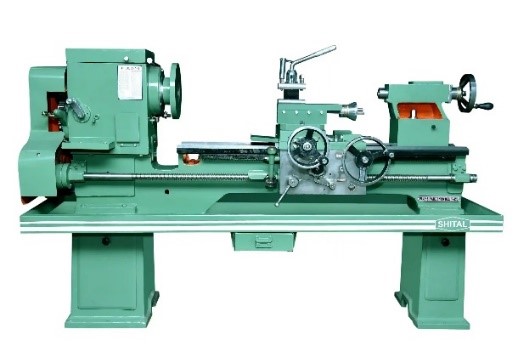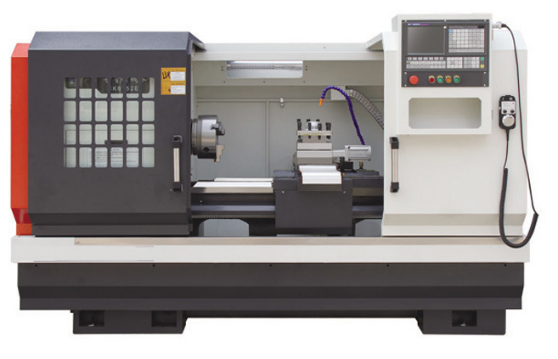A lathe machine is a versatile and widely used machine tool primarily designed for shaping and machining cylindrical materials. It works by rotating the workpiece against a stationary cutting tool, allowing for precise material removal and the creation of symmetrical shapes.

Lathe

CNC Lathe
Key Components:
- Bed: The base structure that supports all other components and ensures stability.
- Headstock: Contains the motor, spindle, and speed control mechanisms, holding and rotating the workpiece.
- Tailstock: Positioned opposite the headstock, it provides support for long workpieces and tools like drills.
- Carriage: Moves along the bed and holds the cutting tool for longitudinal and cross-feed operations.
- Saddle: Mounted on the bed and supports the carriage.
- Cross Slide: Provides lateral tool movement.
- Compound Rest: Allows angular tool positioning.
- Chuck: A clamping device attached to the spindle for holding the workpiece.
- Tool Post: Holds and secures the cutting tools.
- Lead Screw and Feed Rod: Used for precise tool movement and threading operations.
- Apron: Houses the mechanisms for feed and control.
Types of Lathe Machines:
- Engine Lathe: General-purpose lathe for a wide range of machining tasks.
- Turret Lathe: Equipped with a turret for holding multiple tools, ideal for repetitive operations.
- CNC Lathe: Computer-controlled for high precision and complex machining.
- Capstan Lathe: Similar to a turret lathe but used for smaller workpieces.
- Toolroom Lathe: High-precision lathe for fine machining.
- Special-Purpose Lathes: Tailored for specific tasks like wheel lathes and gap-bed lathes.
Common Operations:
- Turning: Reducing the diameter of a workpiece to achieve a cylindrical shape.
- Facing: Producing a flat surface perpendicular to the axis.
- Threading: Cutting screw threads.
- Boring: Enlarging existing holes.
- Drilling: Creating holes using a drill bit.
- Knurling: Creating patterns on the surface for better grip.
- Parting: Cutting off a portion of the workpiece.
Applications:
- Manufacturing shafts, bolts, screws, and gears.
- Creating precise cylindrical parts.
- Machining components for the automotive, aerospace, and machinery industries.
Advantages:
- High precision and efficiency.
- Versatility in machining operations.
- Applicable for small to large-scale production.
